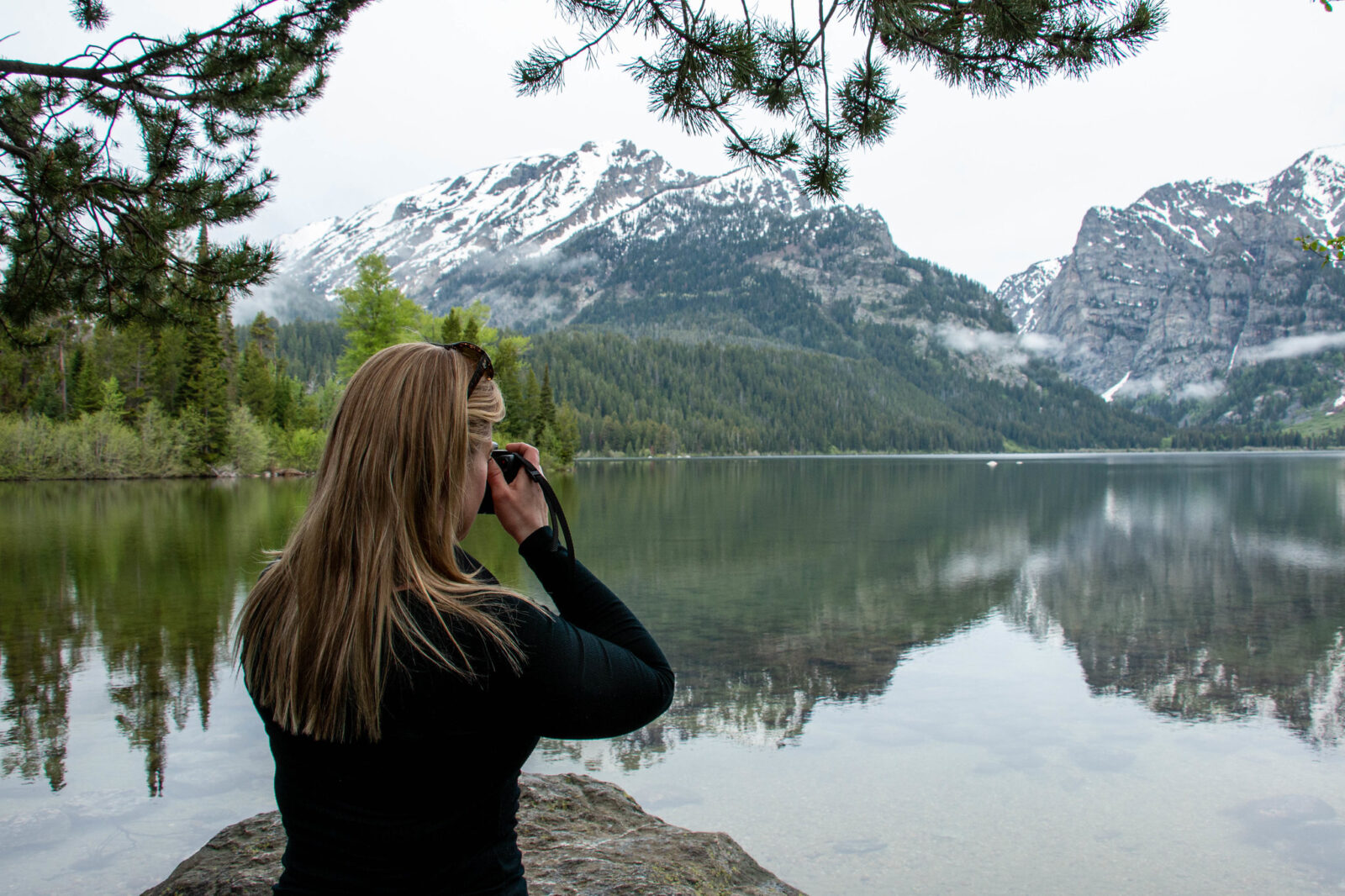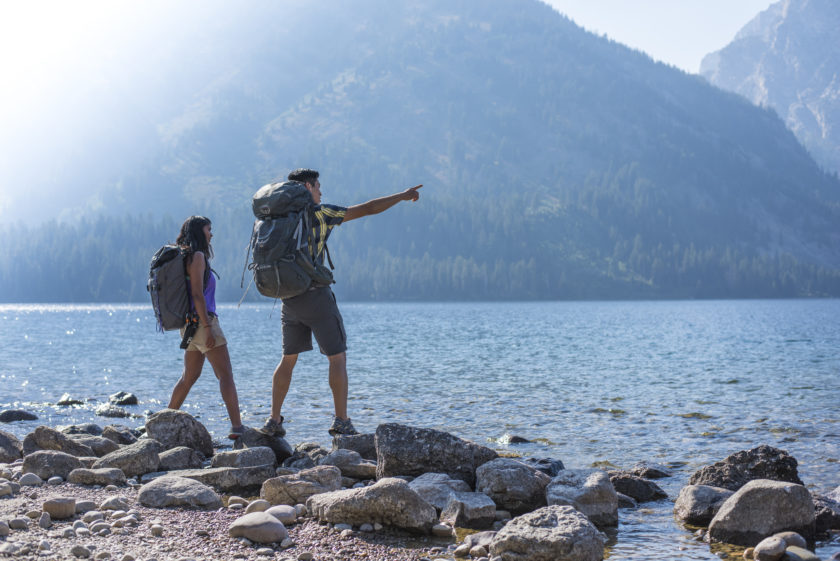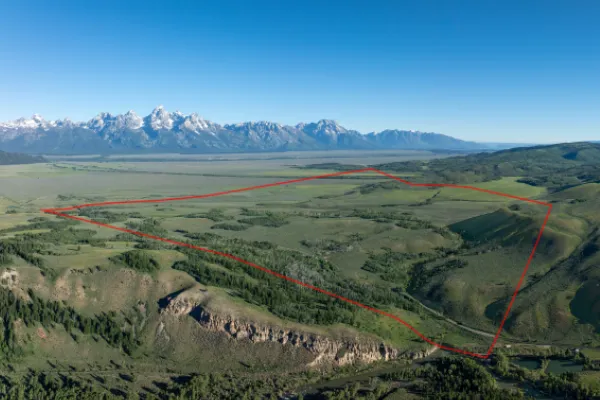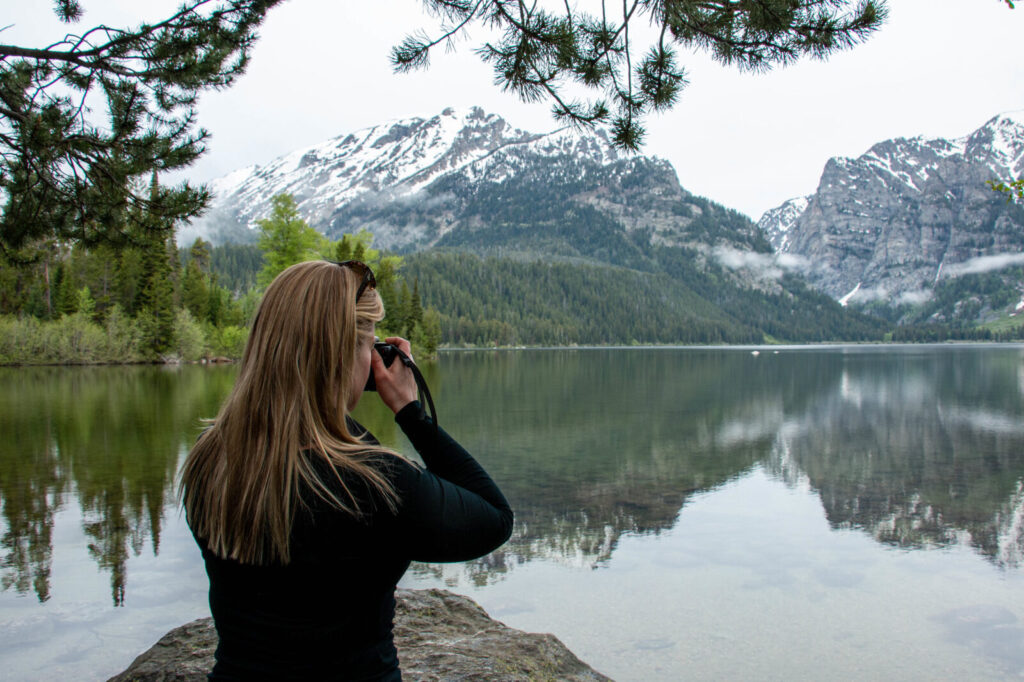
A Few of Our Early Season Favorite Hikes
Grand Teton National Park combines pristine beauty, charismatic wildlife, and sprawling trail networks to create outdoor experiences that are unmatched. Yet, snow in the high country this time of year can make the beginning of summer a challenging time to find a good hike. We’ve come up with a list of a few of our favorite places for an early season walk in Grand Teton. Please be sure to talk to a ranger at any visitor center in the park for the latest trail conditions.
Phelps Lake Overlook: 2.0 miles roundtrip, easy
The Phelps Lake Overlook trail begins at the Death Canyon trailhead. To access the route, a 4-wheel drive vehicle is highly recommended. The hike begins with a moderate climb through a forest dominated by lodgepole pine and aspen groves. After one mile of walking, a lookout point appears offering views of the 750-acre, glacially-carved Phelps Lake—the sixth largest lake in Grand Teton National Park. This is a great family hike throughout spring, summer, and fall and is suitable for most ages.
Grand View Point Trail: 6.1 miles roundtrip, moderate
Beginning near Jackson Lake Lodge, the Grand View Point trailhead is located one mile north of Jackson Lake Junction. The trail passes through grassy meadows and offers stunning panoramic views of Grand Teton, Mt. Moran, and Jackson Lake. These meadows are bursting with color because of the various wildflowers still fresh from spring showers. Along the way, hikers will enjoy sights of Emma Matilda and Two Ocean lakes to the east.
Hermitage Point Trail: 10.0 miles roundtrip, strenuous
The Hermitage Point trailhead is located at the south end of the Colter Bay Visitor Center parking area. Hikers will enjoy views of 12,605-foot Mt. Moran and 11,144-foot Rockchuck Peak to the west. At 10 miles, this is a challenging hike but the views of the lake with the Teton Range in the background is a sight to see.
Rain in the afternoons is common, but don’t let that deter you. Remember to bring appropriate gear and warm layers. Water resistant hiking boots are recommended even along lower elevation valley trails. Bring water, snacks, and keep bear spray out of your packs and on your person.
Note: Wildlife are highly active in spring and often have newborns nearby. Please remember to make noise and have bear spray accessible throughout your adventures in these areas.
...and a Few Important Things to Bring
While you’re out and about, exploring beautiful early season park jaunts like those listed above, it’s important to remember to be prepared with what you’ll need for a safe and fun adventure. We’ve highlighted a few suggested items to carry in your pack while hiking. Please consider that these might change depending on the duration of your hike, time of year, weather conditions, and if you are planning an overnight excursion. It is never too soon to begin preparing!
BEAR SPRAY: Your bear spray should always be on your person and be readily accessible when hiking in bear country. Make sure it is not expired and practice removing it from the holster before venturing out.
Food: An ample supply of snacks should always be in your pack. Calories are your fuel and you don’t want to run on empty. Pack enough in case you are out longer than expected.
Water: Staying hydrated is critical to peak performance for any physical activity. Carry enough water as well as your chosen filtration system. Drink often, and be sure to hydrate the day before any hike.
Clothing: What you decide to carry for clothing is up to you. We recommend a few key pieces; rain jacket, warm layers (NO COTTON!), an extra pair of socks, and a warm hat. A shade hat can be a nice addition as well.
First-Aid: You never know what can happen out there. Blisters, scrapes, and cuts are common while hiking in the Tetons. Everyone packs their first-aid kit differently. Put some thought into what you would like to have with you should you be required to use it.
Light: A headlamp or small flashlight can be a life-saver if you are out unexpectedly after the sun goes down. There are many different options so choose what you like best and don’t get caught in the dark!
Map/Compass: These days you can use your phone to help navigate, but carrying a map is still recommended in case your phone battery dies. Don’t get lost!











